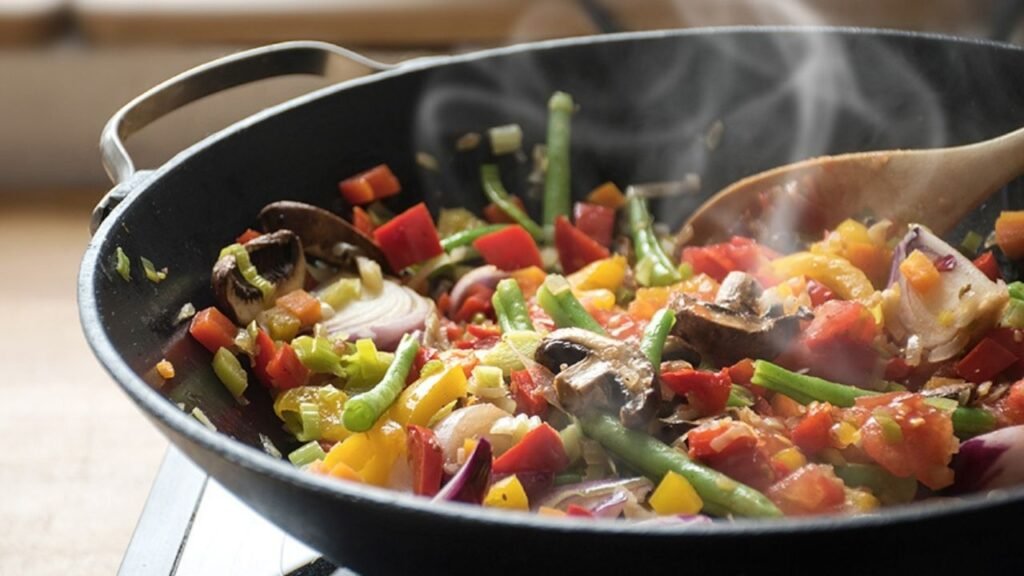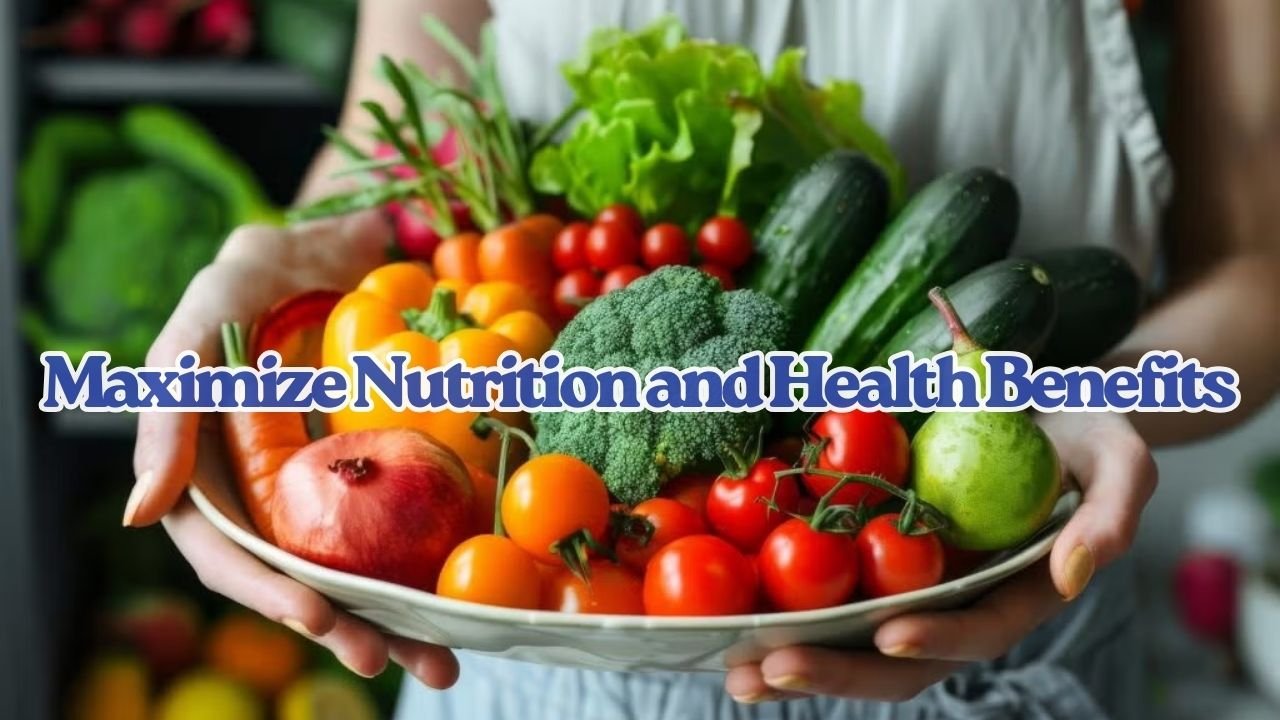Vegetables are an important part of a balanced weight loss plan, offering vitamins, minerals, antioxidants, and dietary fiber that manual commonplace fitness. However, the manner greens are cooked can substantially have an impact on their nutrient content material material. While a few cooking strategies hold or maybe beautify satisfactory nutrients, others can bring about nutrient loss. Understanding the best processes to put together and put together dinner dinner vegetables is high to maximizing their health benefits.
Steaming – Gentle and Nutrient-Rich
Steaming is one of the healthiest approaches to collect dinner dinner veggies since it uses little water and eschews high temperatures that may break warm temperature-sensitive nutrients which includes food plan C and folate.
- How it works: Vegetables are located in a steamer basket over boiling water, allowing steam to cook dinner dinner dinner them lightly.
- Best for: Broccoli, spinach, kale, carrots, and green beans.
- Benefits: Steaming preserves antioxidants, minerals, and water-soluble vitamins, while maintaining the vegetables’ natural colors, textures, and flavors.
Tip: Don’t overcook; steam greens simply till smooth, commonly 3–7 minutes depending on kind.
Stir-Frying – Quick and Flavorful
Stir-frying is a acquainted technique inside the Asian world that entails cooking greens swiftly over excessive warmness with a touch oil.
- How it works: Vegetables are cut into same sized pieces and cooked in a warm pan or wok for a couple of minutes, frequently with garlic, ginger, or herbs.
- Best for: Bell peppers, mushrooms, bok choy, zucchini, and snap peas.
- Benefits: Rapid cooking saves nutrients and antioxidants. Consuming healthful fat such as olive or avocado oil gives healthful fats that help growth the absorption of fat-soluble nutrients (A, D, E, K).
Tip: Keep the warmth excessive but cook dinner best for a fast time to hold crunchiness and nutrients.
Sautéing – Balanced and Easy
Sautéing makes use of moderate warmness and a small amount of oil to put together dinner vegetables fast. Unlike deep-frying, it calls for minimal fat at the same time as improving taste.
- How it works: Vegetables are cooked in a pan with a small amount of healthy oil till mild. Aromatics like garlic or onions may be delivered for flavor.
- Best for: Spinach, mushrooms, asparagus, and bell peppers.
- Benefits: Maintains most nutrients while improving taste, and the healthy fats boost vitamin absorption.
Tip: Don’t upload an excessive amount of oil, and avoid excessive warmness to save you nutrient degradation and formation of harmful compounds.
Roasting – Flavorful but Nutrient-Conscious
Roasting brings out the natural sweetness of vegetables thru caramelization, making them extra attractive, specifically for choosy eaters.
- How it works: Vegetables are coated gently with oil, pro, and baked at mild to excessive warmth until tender and slightly browned.
- Best for: Carrots, sweet potatoes, zucchini, cauliflower, and Brussels sprouts.
- Benefits: Roasting keeps many vitamins, mainly fiber and minerals, and may increase the antioxidant content material in a few veggies like carrots and tomatoes.
Tip: Avoid immoderate oil or very excessive temperatures for long intervals to prevent nutrient loss and the formation of harmful compounds.

Boiling – Use With Caution
Boiling can motive tremendous nutrient loss, mainly water-soluble nutrients like weight-reduction plan C and B-complex nutrients, which leach into the cooking water.
- How it works: Vegetables are submerged in boiling water until cooked through.
- Best for: Root vegetables and legumes.
- Benefits: Boiling can melt tough greens and make them much less hard to digest. The leftover water can be used as a base for soups or sauces to recover a few out of place vitamins.
Tip: Keep the boiling time short and consider using minimal water. Steaming or blanching is generally preferable.
Blanching – Quick and Nutrient-Saving
Blanching includes in quick boiling veggies, then plunging them into ice water to save you cooking. This approach is wonderful for preserving coloration, texture, and vitamins.
- Best for: Green beans, broccoli, asparagus, and leafy greens.
- Benefits: Helps retain vitamin C and prevents overcooking. Also a great technique for preparing vegetables for freezing.
Tip: Do not over-blanch; usually 2–3 minutes is sufficient for most vegetables.
Microwaving – Fast and Efficient
Microwaving is a convenient method that calls for a minimum quantity of water and brief cooking instances.
- How it works: Vegetables are placed in a microwave-safe dish with a small amount of water and covered to trap steam.
- Best for: Broccoli, spinach, and green peas.
- Benefits: Research shows microwaving can preserve more nutrients than boiling, as it reduces cooking time and exposure to heat.
Tip: Use a microwave-safe cover to retain moisture and avoid overcooking.
Fermenting – Nutrient-Boosting
While no longer a cooking approach, fermenting veggies together with cabbage (sauerkraut) or radish provides probiotics that enhance gut health.
- Benefits: Fermentation enhances digestion, supports immunity, and may increase certain vitamins like vitamin K2.
- Tip: Store fermented vegetables properly and consume them raw to retain beneficial bacteria.
Conclusion
While no longer a cooking approach, fermenting veggies together with cabbage (sauerkraut) or radish provides probiotics that enhance gut health.
To surely maximize nutrients, pair vegetables with healthy fats (olive oil, avocado, nuts) to beautify fats-soluble nutrition absorption, and devour numerous colours to access a extensive range of antioxidants and phytonutrients. With proper training, vegetables may be each fun and health-giving, improving trendy health and properly-being.
